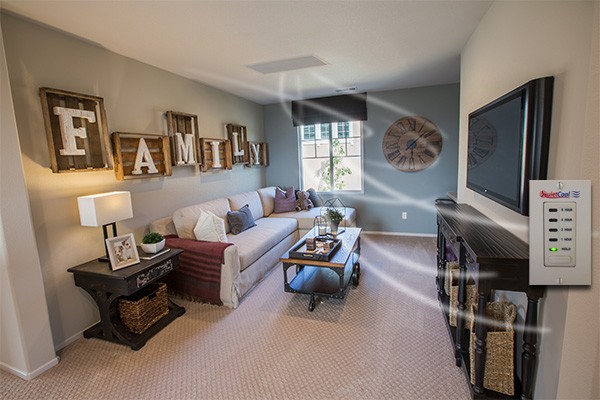How it Works
- Timer and speed selector to control operation
- Intake pulls hot air from your living space
- Fresh air cools and ventilates your home
- Reduce electric bills
Natural Cooling is Ideal for Hawaii's Climate
With our warm sunshine and cool trade winds, Hawaii’s beautiful climate is moderated by the temperature of the surrounding ocean. In most of the state the range between the coldest and warmest months averages less than 10° F difference. In the leeward areas, temperatures in the low 90’s may be reached on several days during the year, but temperatures higher than these are unusual. In windward areas, elevated areas and neighbor islands air temperatures are even more comfortable.

It's Hot in my House!
During the day the sun warms the home. Hot air rises and expands, which means that heat has to exit the home before cooler outside air can come in. Often homes are closed up when we go out for the day, so heat gets trapped inside until we come back in the evening to “air the house out”.
Turning on an A/C means keeping the house closed up, and many local homes aren’t designed for efficient cooling.

Hot Air Out, Fresh Air in.

Quick & Quiet Cooling
Because QuietCool is ventilating your home three ways, the whole house fan system will work effectively anytime the outdoor shade temperature (ambient temperature) is in the comfort range, which is normally the case in Hawaii.
Because the system is not refrigerating air, it’s a very cost energy efficient way to cool the home. The control switch allows it to provide on-demand ventilation when you want it, and because QuietCool works with open windows it’s a great fit for our indoor/outdoor lifestyle.
What is Thermal Mass Cooling?
Think of your car parked in the sun. If you were to go out, roll down the windows and just sit, notice it won’t cool off. It’s not just hot air, but the seats, dashboard and steering wheel are hot too. Once you start driving, the large amount of air coming in through the windows takes the heat out of the mass of the vehicle. That is thermal mass cooling.
CFM (cubic feet per minute) is the measure of air that is moved by a fan. Fans with a higher CFM can cool an area more effectively. Your QuietCool system is sized to ventilate the air volume of the room every two to three minutes. This allows the system to achieve lower indoor temperatures and cool the mass of the home.
A Proven Solution

Hawaii Energy

US Department of Energy

Environmental Protection Agency

County of Hawaii

County of Kauai

LEED
Island Cooling provides solutions to reduce energy and cool your home. Let us show you how!

